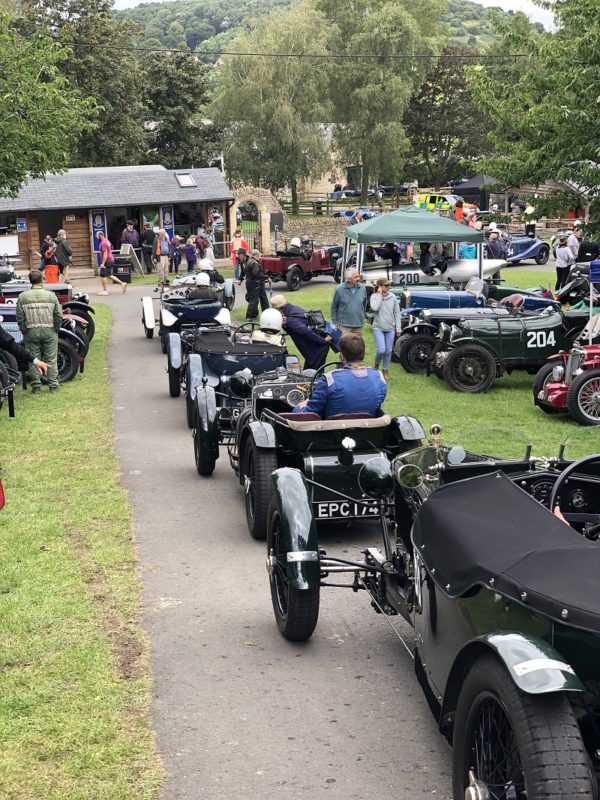
On Saturday and Sunday 7th and 8th August the SAHB was back at Prescott after a year’s gap (for one thing and another…) We took our usual stand for the third time, once again thanks to Ian Ferguson and his team at the VSCC Library. This time, our flag stayed outside but our table had to shelter inside the VSCC tent: the weather was a little variable.
Thank you to all the enthusiasts, members of the SAHB or non-members, who came to chat about cars and bikes, old and new(er), and often to buy our publications.
Prescott is rightly called the ‘Jewel in the Crown’ of the VSCC diary, where old cars (or, as we shall see, new specials made of genuine old bits) race up the hill, vintage and classic cars throng the Orchard car park, and you can buy an ice cream or an old copy of Motor Sport, and some superb books, all within a few yards of each other. Although the trek up to the Esses is a bit further…
Just as in 2019, there was so much to see that we’re going to split our report into several news items that we’ll post over the next few weeks. We’ll start with the racers: pictures, stuff we know about them, and stories we heard about them during the weekend.
So here we go with Part One: The Racers…
Neil Thorp’s 1935 Hudson Spikins Special
SAHB member Neil Thorp has been working hard to bring this rare machine to perfect health for Prescott. Named after Bob Spikins, Director of Alexander Tuning Co, it is powered by a 4168cc straight-eight side-valve Hudson engine supercharged by two enormous Centric blowers. The chassis is standard Hudson, imported from Canada in period to save import duties and shortened in Hudson’s Brentford works.
The twin Centric superchargers, fed by two updraught SUs hidden below
1930/28 Morgan RIP Special
Morgan began in 1911 by building three-wheeler, two-seater, V-twin-engined cyclecars – and GN began operating a year before. This special combines the two: Morgan front and GN rear axle and gearing. It is normal to see Morgans powered by JAP engines, but the RIP name on the engine is there for a totally different reason: the car has been said to be a death trap!
1933 Vale Special
The two cars above are specials because they were built from period parts – but this is a very different beast.
The Vale Motor Company was established in 1931 by Pownoll Pellew as a ‘gentleman’s hobby’ in a rented workshop in Maida Vale. The cars were initially handmade and based on Triumph components. What made the car ‘special’ was its low-slung chassis, intended as a remedy to the poor road-holding of small sports cars. This car is noted in the programme as ‘Modified’ – perhaps because of its 898cc engine: the first cars had a Triumph 832cc engines and later ones Coventry Climax 1098 or 1476cc power plants.
Dr Charles Pither’s 1931 Frazer Nash Ulster
This is a unique car. It was built at the factory for Aldington’s own race use and is powered by a 1496cc twin-cam Anzani engine with four Amal carburettors.
The Anzani engine
Rachel Blake’s 1928 BNC Special
For some strange reason people always want to tell you who built these cars: Bollack, Netter & Cie. They would normally be powered by Ruby engines; this special has a Salmson one.
Philip Milne-Taylor’s 1937 Invicta S-Type
When you are determined to have one of these fabulous cars but do not have access to over a million pounds, you build one. The Invicta Compnay was revived in recent years, and among other projects built new frames for the S-Type (or Low-Chassis). This car uses one, and has an original Meadows engine, but features an ENV preselector gearbox rather than the usual manual. It is a fine recreation.
The original Meadows engine
1928 Aston Martin LM2
Sometimes you do not need to ask about a car or its history: here, just see the LM2 written on the bonnet, and get onto the Internet.
LM1 and LM2 were built in 1928 to race at Le Mans. They were highly modified from the production models: parts were lightened all over the cars, and 6 lb was removed from the front axle alone.Other parts were made from lighter materials such as aluminium or Elektron (magnesium-aluminium alloy). In-house dyno tests showed 7-10% greater performance over standard cars. LM2’s 1.5-litre, four-cylinder engine was dry-sump, with its oil tank between the dumb-irons.
In the 1928 Le Mans race both cars retired, but the team was awarded the special Rudge-Whitworth prize of 1,000 Francs for the fastest cars over the first 20 laps, with an average speed of well over 60 mph. LM2 was then rebuilt and used as a Works demonstrator until the 1929 race season. LM2 and the newly-constructed LM3 were then entered for the new Double Twelve race at Brooklands. The current owner is only the third in 75 years.
1903 Mercedes 60HP
This famous car has a 9236cc four-cylinder engine. The 60HP model is the noble successor of the first Mercedes, the 35HP racing car, designed in 1901 by Wilhelm Maybach and Paul Daimler for Emil Jellinek and named after his daughter Mercédès. The 60HP was not, however, a racer, but a road car built in 2- and 4-seater form. This particular car has been raced by the Collings family for many years. It is seriously quick.
Regrettably, the car was unable to play this instrument in the jazz band that marched along the track on Sunday. A pity – there would have been so many (oily) notes…
1922/38 GN/Ariel KN IV “Caliban”
Another special, this time a GN chassis into which have been inserted two Ariel Square Four motorcycle engines, with a total capacity from 8 cylinders of 2000cc. One of the more bizarre creations seen at Prescott, and joyous to behold. It was developed on the basis of an earlier creation by Kenneth Neve, one-time president of the VSCC.
the Ariel engines gave rise to this Shakespearean quote from Kenneth Neve. The fuel tank [correction: oil tank: see the comment at the base of this post for corrections from the owner, Jade Dearling] carries the engraved name “Tanngrisnir”, Old Norse for “teeth thin”, or “one that have gaps between the teeth”. Appropriate for a chain-driven special?
1936 ERA AJM1
At Pardon hairpin is ERA AJM1, built up from original parts by Anthony Merrick in 1980 to original 1930s specification. It is said to be an 80 per cent original ERA B Type.
1925 Bugatti Type 35B
It was suitably nostalgic to see a Bugatti on the hill at the Bugatti Owners’ Club’s own venue. This is one of the greatest: a Type 35B, 2300cc supercharged. The high-mounted blow-off valve hole is the way to distinguish it from the later twin-OHC Type 51, where the hole is lower to tuck under the right-hand camshaft cover.
The engine of the Type 35B with its high supercharger blow-off valve
Look out on this website for Part Two: The Pre-War Cars – fine machines we found in the car parks. Part Three will be the Post-War Cars – more fine machines, including one or two built in the 21st Century!
See you soon!







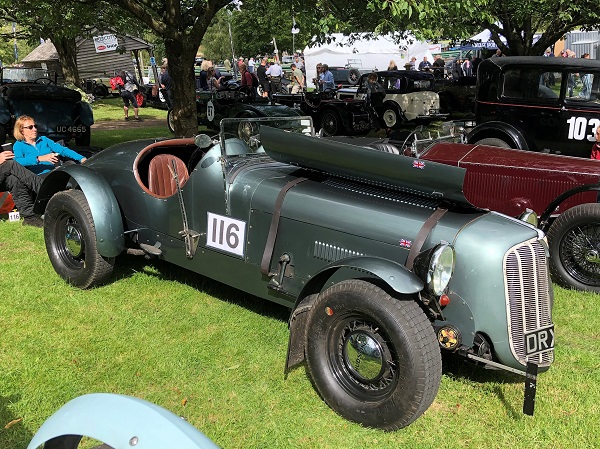
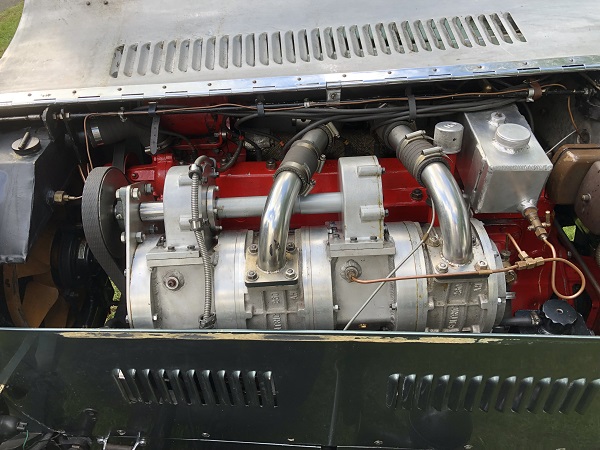
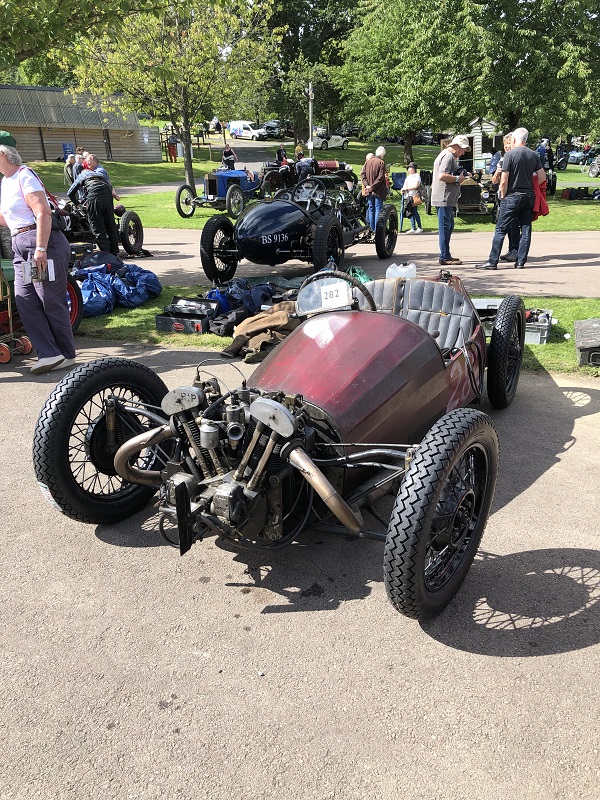

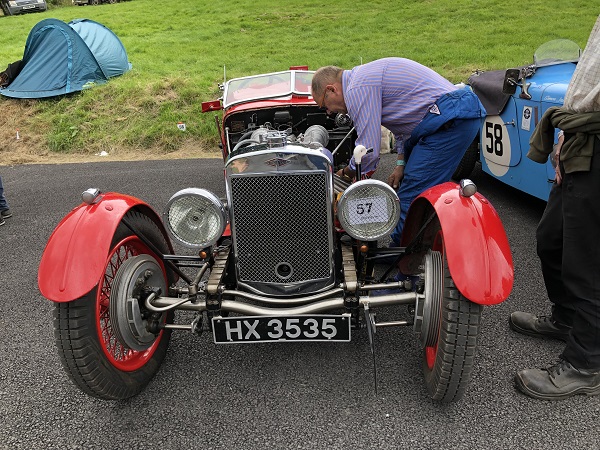



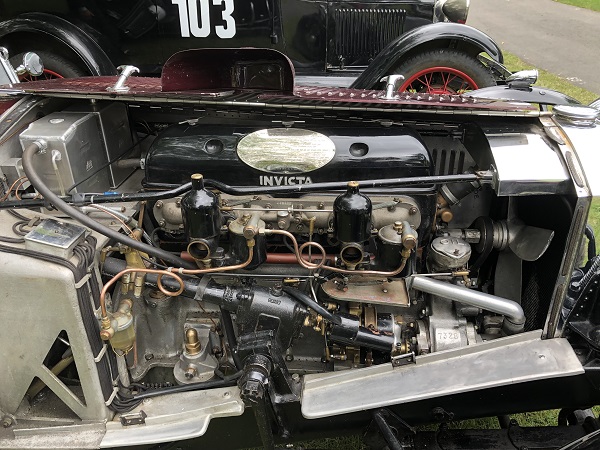
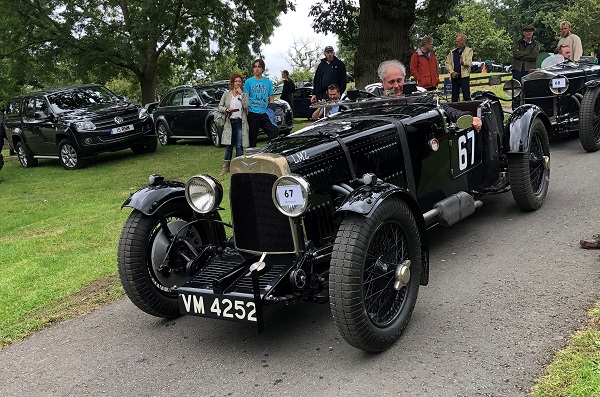

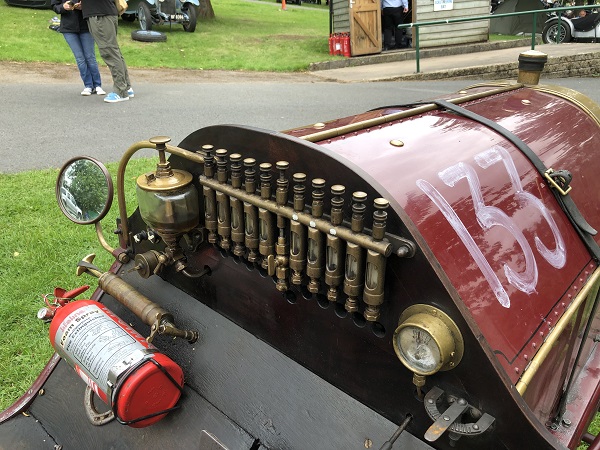



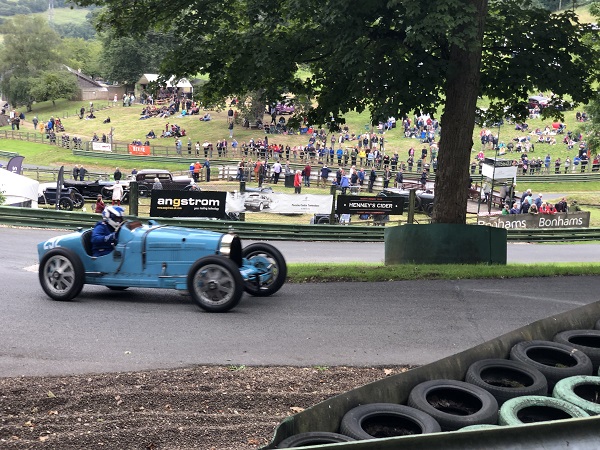
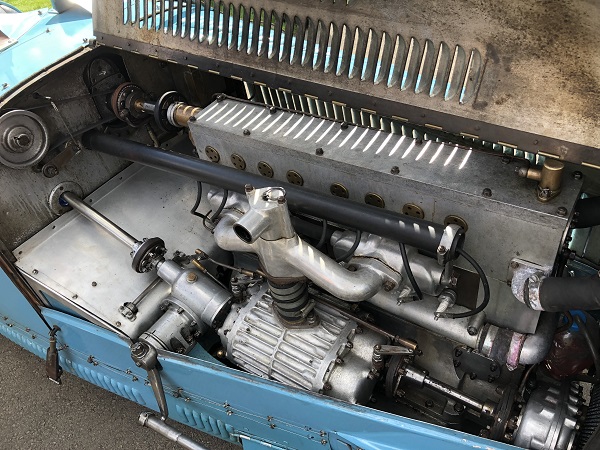
GNAriel KNIV
I believe that the car is substantially what Kenneth Neve originally created, the front axle, suspension and body have all been changed, the originals being now lost. The engines have probably been replaced but his original gearbox is currently awaiting attention.
As to the name Tanngrisnir engraved into the oil tank (not fuel tank) of the frint engine. This is the name of one of the 2 goats that drew Thor’s chariot, there are several variations of the translation of this name, I chose ‘tooth barer or snarler’, the name on the other oil tank serving the rear engine is Tanngnjostr ‘tooth grinder or Gnasher’. To name the engines thus was just a little joke of mine.
I have only submitted these corrections because I would hate to see more inaccuracies perpetuated than need be. All meant in good faith and spirit.
Invicta, Apparently this car has the original front axle that was in PL9662 driven by Donald Healey, my father (F M Montgomery) and T G Moore in the 1933 Monte Carlo rally which sadly didn’t finish the rally, when it skidded off the road and the axle was too badly bent to be repaired in time to continue. Phil let me sit in the car for a picture.